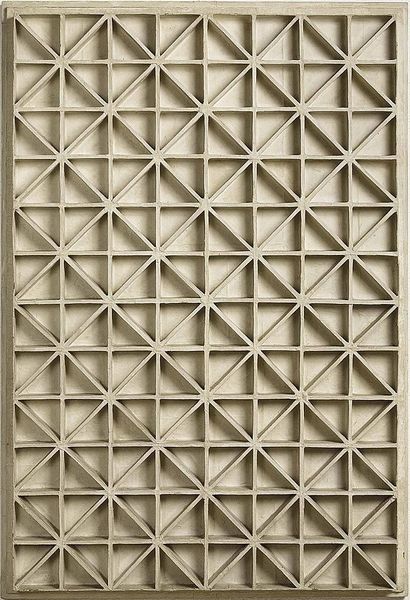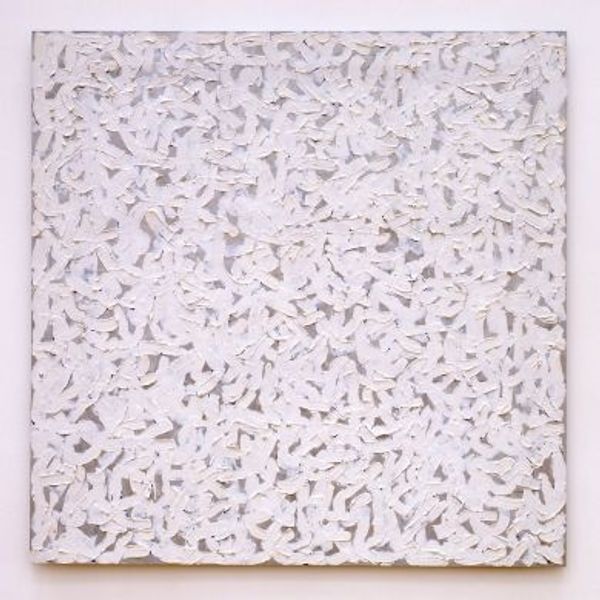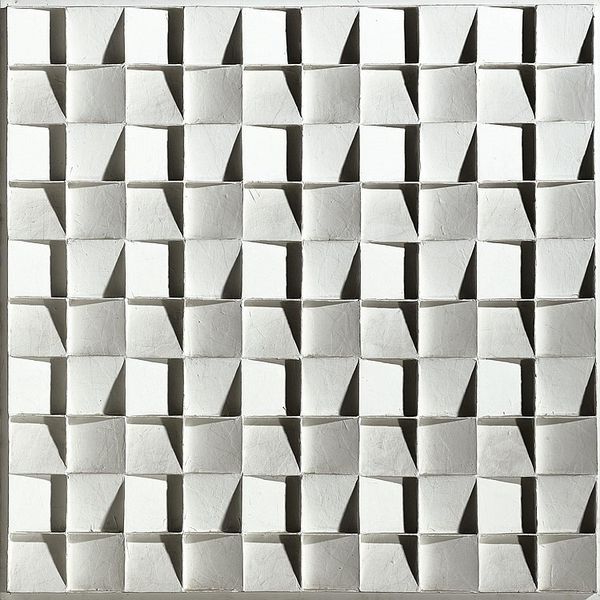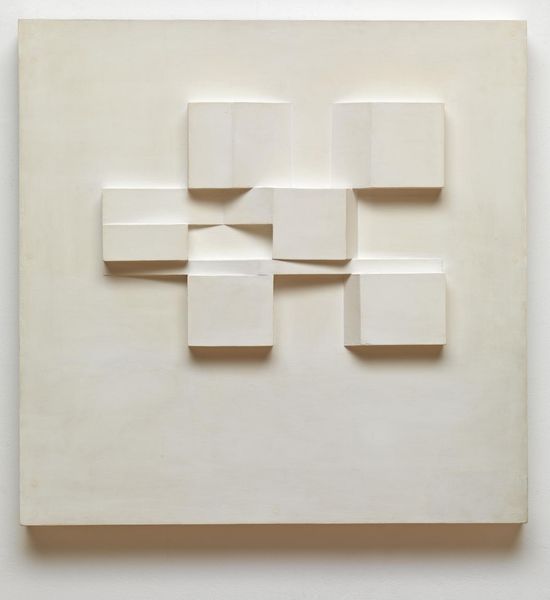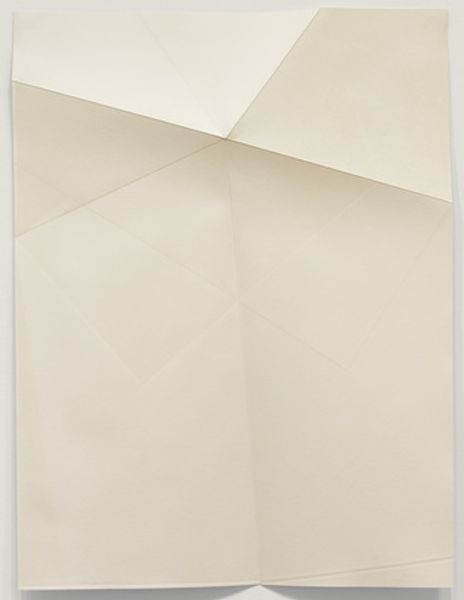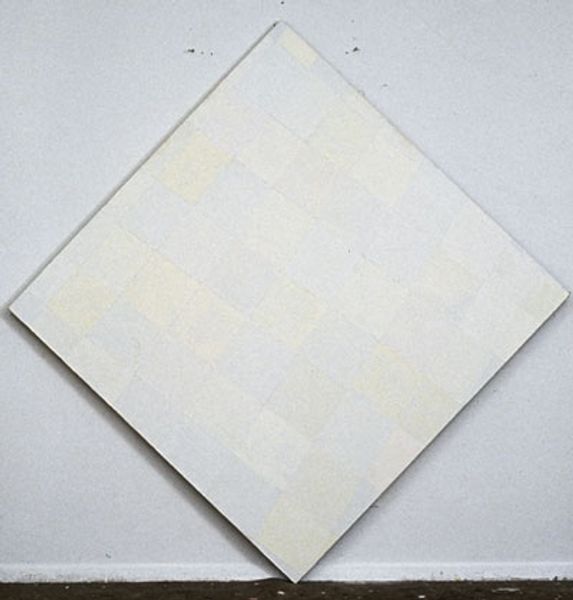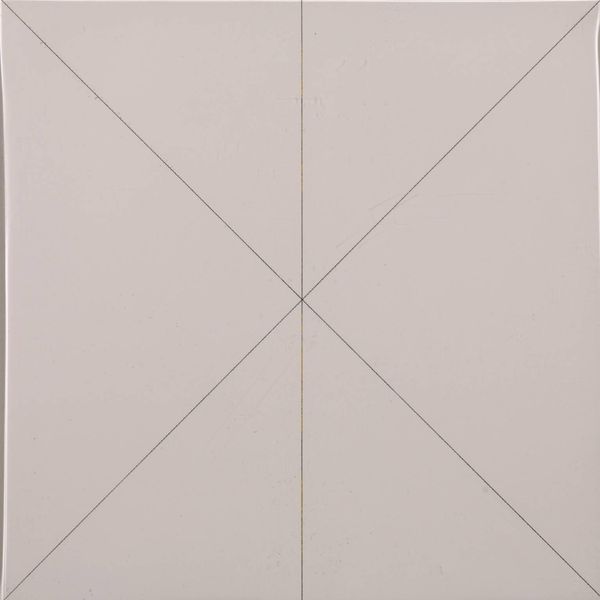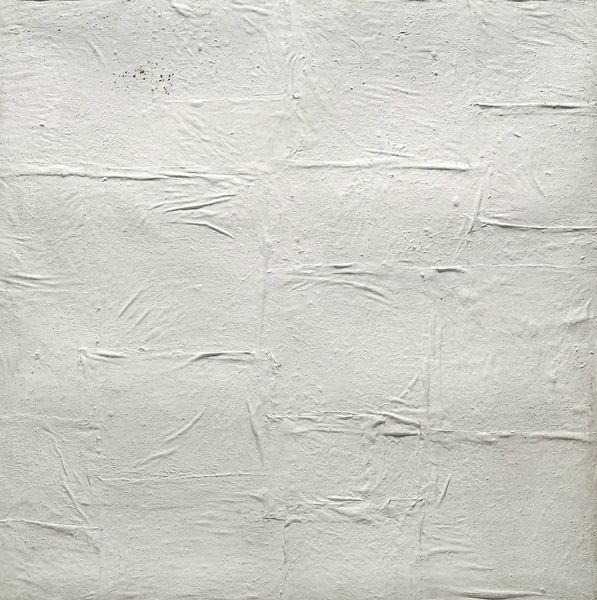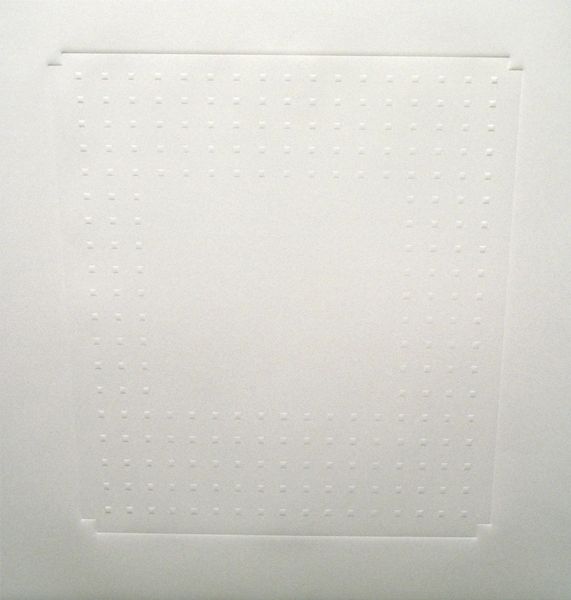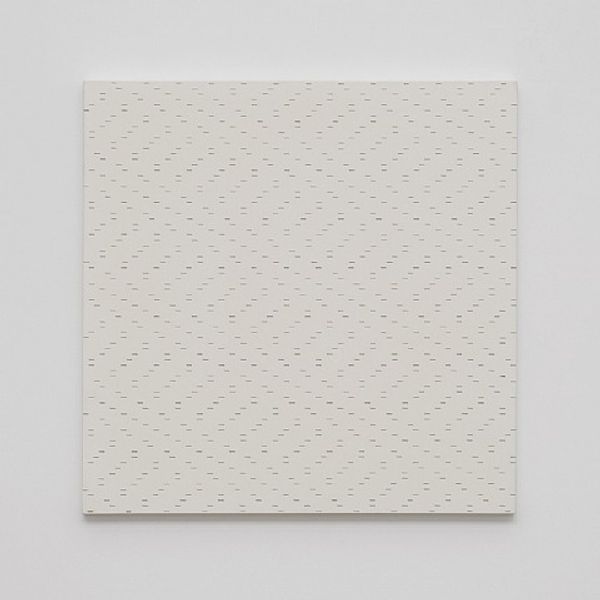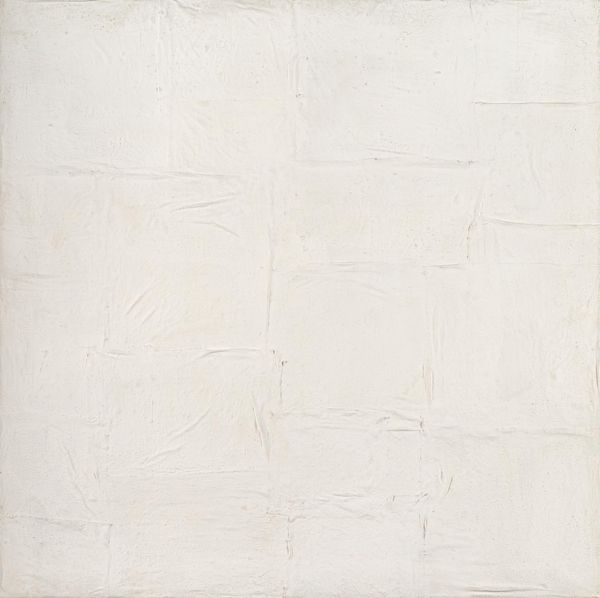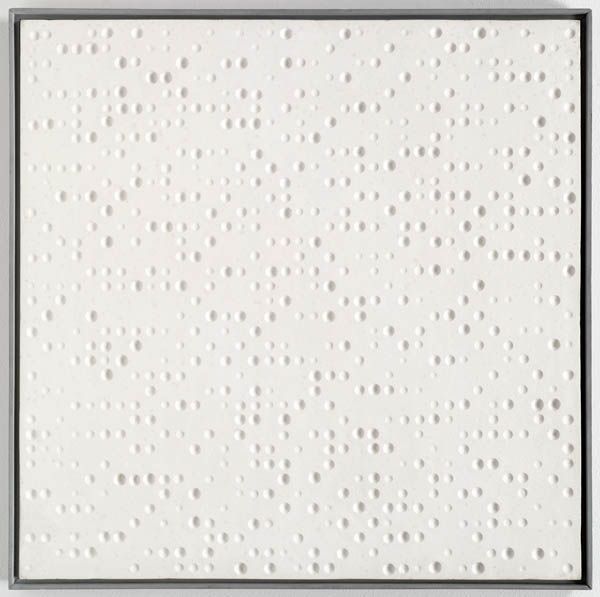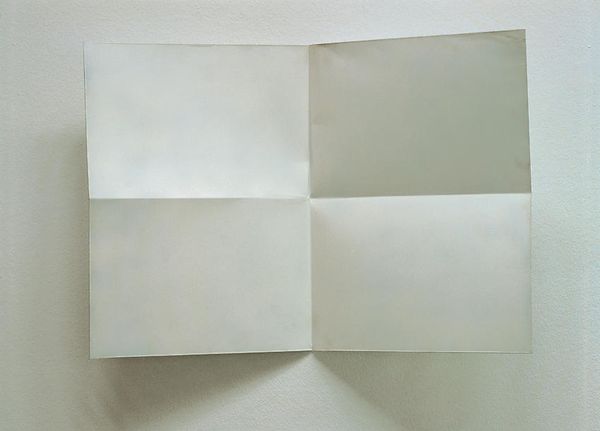
relief
#
natural stone pattern
#
conceptual-art
#
dutch-golden-age
#
minimalism
#
relief
#
abstract
#
geometric pattern
#
subtle pattern
#
abstract pattern
#
minimal pattern
#
organic pattern
#
geometric
#
repetition of pattern
#
pattern repetition
#
imprinted textile
#
layered pattern
Copyright: Johannes Jan Schoonhoven,Fair Use
Editor: So, this is Johannes Jan Schoonhoven's "Relief R 69-1" from 1969. It seems like a field of squares, almost architectural in its simplicity and the way the light catches each raised form. What do you see in this piece? Curator: The grid speaks volumes, doesn’t it? Think about the cultural weight of grids – from city planning to textile designs. This relief evokes a sense of order and control, but look closer. Are all the squares precisely the same? Editor: No, they definitely aren't identical. There's a subtle irregularity to them. Curator: Precisely! This irregularity is key. It challenges the very idea of perfect order. Consider the history of the grid as a symbol: often used to impose structure, but here, it seems to hint at the human element, the slight imperfections, even fragility beneath the surface. It resonates with cultural memories of architecture, of course, but almost like ruins. Editor: That's fascinating. It's like he’s using this very rigid structure to almost explore impermanence. The texture and colour are also evocative, the plaster casting small shadows that suggest both form and void. Curator: Absolutely! The use of monochrome elevates the geometric grid, so its shapes carry both weight and shadow, symbolising a continuity between the present and our artistic past, with this memory echoing beyond history itself. It makes you wonder: What future artifacts will be haunted by echoes of today? Editor: This really made me rethink how simple forms can carry complex meanings. Thanks! Curator: A pleasure! Hopefully now you see more in grids than simple order.
Comments
No comments
Be the first to comment and join the conversation on the ultimate creative platform.
